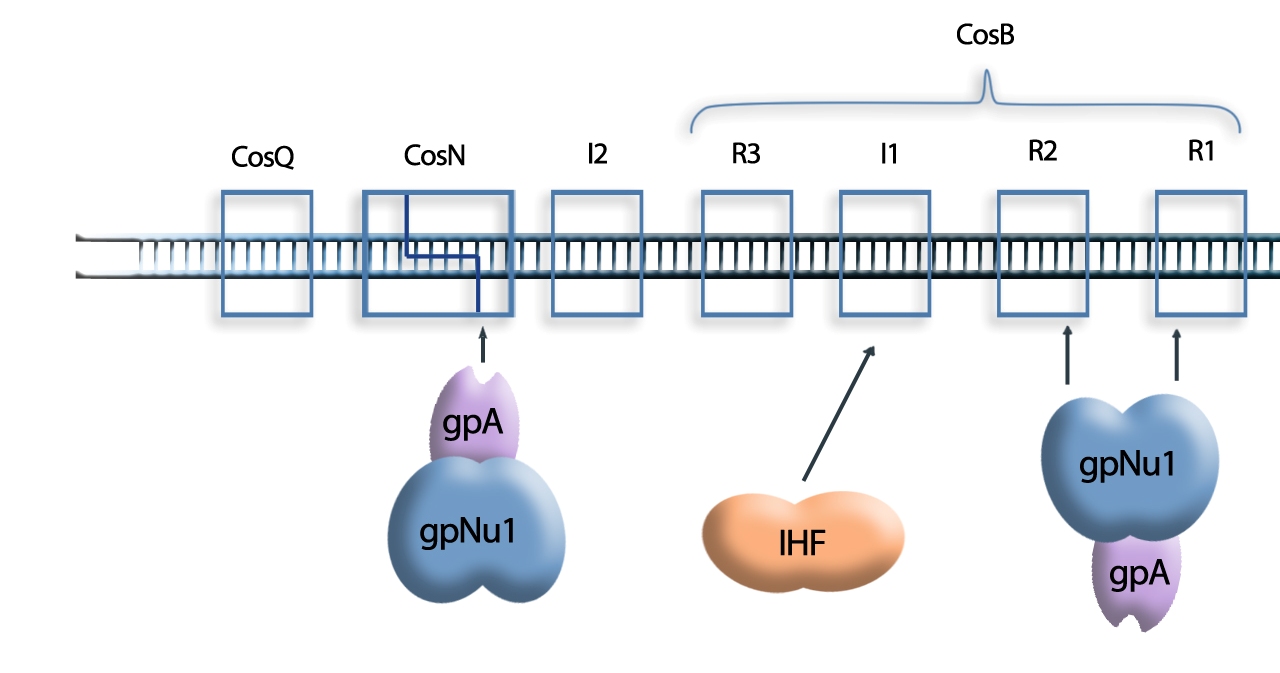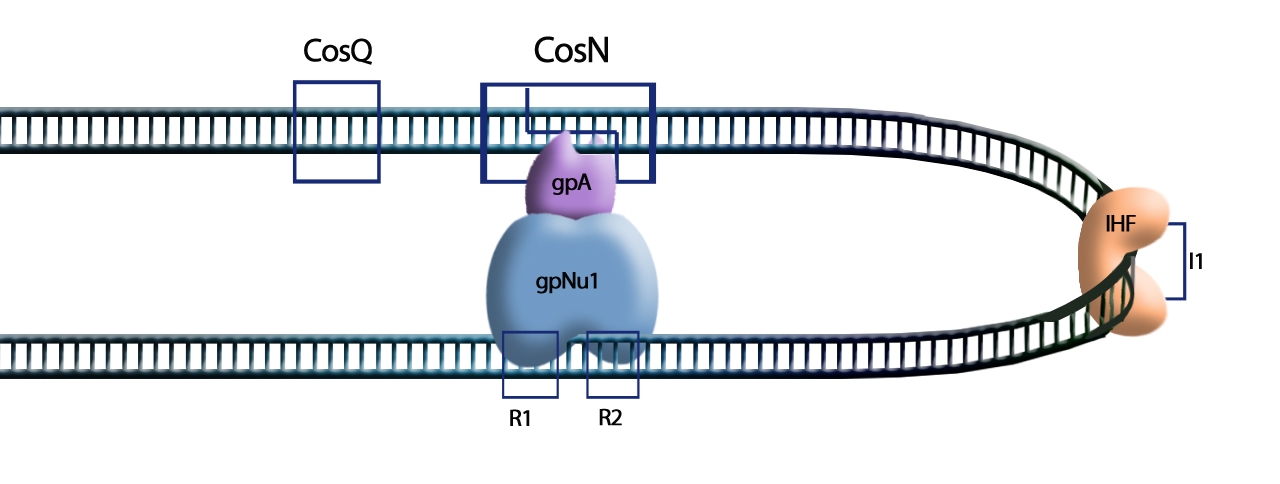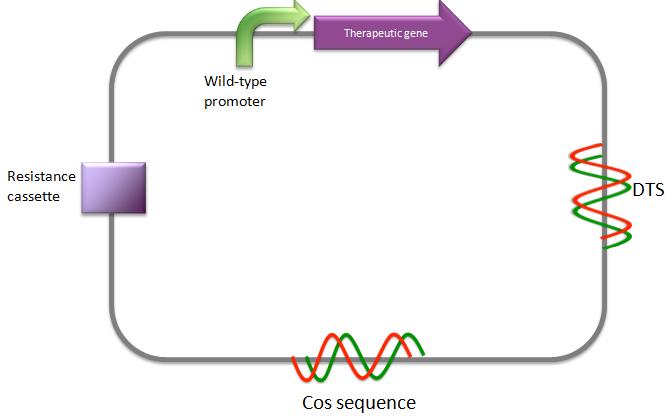Team:SupBiotech-Paris/Concept3
From 2009.igem.org
Enguerrand (Talk | contribs) (New page: {{Template:Supbiotechcss.css}} {{Template:SupbiotechparisEn}}) |
(→To summarize…) |
||
| (22 intermediate revisions not shown) | |||
| Line 1: | Line 1: | ||
{{Template:Supbiotechcss.css}} | {{Template:Supbiotechcss.css}} | ||
{{Template:SupbiotechparisEn}} | {{Template:SupbiotechparisEn}} | ||
| + | |||
| + | = The therapeutic plasmid = | ||
| + | |||
| + | The therapeutic plasmid function is to express the '''therapeutic gene''' wich responds to the targeted pathophysiology.<br> | ||
| + | It must have two essential characteristics: '''To be encapsidated''' into the [[Team:SupBiotech-Paris/Concept2#drapeau|cell vector]], the lambda phage, and have the ability of '''reach the nucleus''' of the target cell.<br> | ||
| + | You will be able to discover in this chapter, what were the strategies implemented to address these issues. <br> | ||
| + | |||
| + | |||
| + | <span style="float: right">[[Team:SupBiotech-Paris/Concept3#drapeau|Back to top]]</span> | ||
| + | |||
| + | <div id="cos"></div> | ||
| + | == The Encapsidation within the cell vector [1,2,3,4,5,6]== | ||
| + | |||
| + | During the assembly process of lambda phage, the encapsidation of the genome within the capsid is ensured by the ends of specific sequences called [[Team:SupBiotech-Paris/Biobricks#drapeau|Cos sequences]]. These sequences are placed on the therapeutic plasmid. And to ensure that it is the only '''encapsidation''' in the [[Team:SupBiotech-Paris/Concept2#drapeau|cell vector]], these sequences were excised from the phage genome. Thus, if the [[Team:SupBiotech-Paris/Concept2#drapeau|cell vector]] infects a bacterium of the organism, it will not lead to its destruction and will not cause any infection. The [[Team:SupBiotech-Paris/Concept2#drapeau|cell vector]], incorporating only the therapeutic plasmid is not replicative and therefore does not possess any pathogenicity to the commensal bacterial population. <br> | ||
| + | The [[Team:SupBiotech-Paris/Biobricks#drapeau|sequences Cos]] are composed of three specific sites: CosN, CosB and CosQ. | ||
| + | [[Image:COS.png|center|frameless|450px]] | ||
| + | CosN corresponds to the cleavage site of the terminase (a produced enzyme during the lytic phase) on the DNA concatamer, which will generate the cohesive ends of mature DNA ([[Team:SupBiotech-Paris/Biobricks#drapeau|Cos sequences]]) and initiate encapsidation of the genome (CosB being the binding site of the terminase). CosQ is however necessary as an arrest sequence of encapsidation, it acts in line with the sites CosN and I2 (a sequence located between CosN and CosB). | ||
| + | |||
| + | It has also been demonstrated that the initiation of the cut at CosN is assisted by the IHF, Integration Host Factor during the process of encapsidation. This process causes a bend of the DNA by binding I1 (a sub-sequence of CosB) allowing gpNu1 (subunit of the terminase, which does not display the activity of endonuclease) to set the sites R (1,2,3) of CosB. This binding triggers the endonuclease activity of the terminase subunit GpA releasing a genomic monomer ready to be encapsidated. | ||
| + | [[Image:Terminase.png|center|frameless|450px]] | ||
| + | To summarize, the terminase binds to a [[Team:SupBiotech-Paris/Biobricks#drapeau|Cos sequence]] of concatemeric DNA and causes a cut that releases the left end of genome to encapsidate. It is the binding of the complex enzyme-DNA to an empty procapsid that initiates the encapsidation process. | ||
| + | |||
| + | By removing the [[Team:SupBiotech-Paris/BiobricksFr#drapeau|Cos sequence]] of the phage genome, it is never encapsidated. Only the therapeutic plasmid, which possesses them, is encapsidated. | ||
| + | |||
| + | |||
| + | <span style="float: right">[[Team:SupBiotech-Paris/Concept3#drapeau|Back to top]]</span> | ||
| + | |||
| + | == The nuclear targeting [7]== | ||
| + | |||
| + | The [[Team:SupBiotech-Paris/Concept2#drapeau|cell vector]] releases after an endocytosis step, the therapeutic plasmid into the cytoplasm of the target cells. However, the plasmid must absolutely '''penetrate the nucleus''' to ensure its '''stability''' and '''expression'''. Any plasmid will rarely reach the nucleus if we do not provide to it, the necessary element to trigger a mechanism of nuclear incorporation. Studies were conducted on the use of specific sequences for nuclear import of genetic sequences: '''DTS sequences''' (DNA Nuclear Targeting Sequence). The [[Team:SupBiotech-Paris/Biobricks#drapeau|SV40 sequence]] of the simian virus is known to play this role. <br> | ||
| + | |||
| + | 5’ GCATGCTTTG CATACTTCTG CCTGCTGGGG AGCCTGGGGA CTTTCCACAC CCTAACTGAC ACACATTCCA CAGCTGGTTC TTTCCGCCTC AGAAGGTACC T 3’<br> | ||
| + | |||
| + | This sequence, known for having the ability to bind to 10 different transcription factors, provides the transportation of DNA to the nucleus. Added to the therapeutic plasmid, this sequence ensures the entry and the expression of therapeutic plasmid into the nucleus of the target cell. <br> | ||
| + | |||
| + | |||
| + | <span style="float: right">[[Team:SupBiotech-Paris/Concept3#drapeau|Back to top]]</span> | ||
| + | |||
| + | == Therapeutic genes == | ||
| + | |||
| + | The plasmid possesses the therapeutic gene or genes to bring to the pathogenic cell to respond to a targeted disease. Regarding genes naturally present in the genome, we chose to place them under the control of their '''natural promoter'''. Thus, the cell is never forced to anything, and no pressure is exerted on its metabolism. The genes are produced only when required. This precaution ensures some '''Security''' concerning the toxicity, which may be related to the internalization of the plasmid into a healthy cell. <br> | ||
| + | |||
| + | |||
| + | <span style="float: right">[[Team:SupBiotech-Paris/Concept3#drapeau|Back to top]]</span> | ||
| + | |||
| + | == To summarize… == | ||
| + | |||
| + | The [[Team:SupBiotech-Paris/Concept#DVS|DVS]] has a therapeutic plasmid with the following characteristics: <br> | ||
| + | <div style="margin-left: 100px;"> | ||
| + | - A '''sequence ensuring its encapsidation''' within the [[Team:SupBiotech-Paris/Concept2#drapeau|cell vector]],<br> | ||
| + | - A '''sequence ensuring its delivery to the nucleus''',<br> | ||
| + | - One or more'''therapeutic genes''',<br> | ||
| + | - A resistance cassette used for selection of transformed bacteria.<br> | ||
| + | </div> | ||
| + | |||
| + | [[Image: Plasmidetherap eng.png|center|400px]] | ||
| + | |||
| + | |||
| + | <span style="float: right">[[Team:SupBiotech-Paris/Concept3#drapeau|Back to top]]</span> | ||
| + | |||
| + | |||
| + | <html> | ||
| + | <div style="float: right; margin-right: -85px;"> | ||
| + | <a href="https://2009.igem.org/Team:SupBiotech-Paris/Conclusion1#drapeau" target="_self"> | ||
| + | <img title="Let's go to the next page !" style="width: 100px;" src="https://static.igem.org/mediawiki/2009/e/e9/Suivant.png";> | ||
| + | </a></div> | ||
| + | </html> | ||
Latest revision as of 01:03, 22 October 2009
Contents |
The therapeutic plasmid
The therapeutic plasmid function is to express the therapeutic gene wich responds to the targeted pathophysiology.
It must have two essential characteristics: To be encapsidated into the cell vector, the lambda phage, and have the ability of reach the nucleus of the target cell.
You will be able to discover in this chapter, what were the strategies implemented to address these issues.
The Encapsidation within the cell vector [1,2,3,4,5,6]
During the assembly process of lambda phage, the encapsidation of the genome within the capsid is ensured by the ends of specific sequences called Cos sequences. These sequences are placed on the therapeutic plasmid. And to ensure that it is the only encapsidation in the cell vector, these sequences were excised from the phage genome. Thus, if the cell vector infects a bacterium of the organism, it will not lead to its destruction and will not cause any infection. The cell vector, incorporating only the therapeutic plasmid is not replicative and therefore does not possess any pathogenicity to the commensal bacterial population.
The sequences Cos are composed of three specific sites: CosN, CosB and CosQ.
CosN corresponds to the cleavage site of the terminase (a produced enzyme during the lytic phase) on the DNA concatamer, which will generate the cohesive ends of mature DNA (Cos sequences) and initiate encapsidation of the genome (CosB being the binding site of the terminase). CosQ is however necessary as an arrest sequence of encapsidation, it acts in line with the sites CosN and I2 (a sequence located between CosN and CosB).
It has also been demonstrated that the initiation of the cut at CosN is assisted by the IHF, Integration Host Factor during the process of encapsidation. This process causes a bend of the DNA by binding I1 (a sub-sequence of CosB) allowing gpNu1 (subunit of the terminase, which does not display the activity of endonuclease) to set the sites R (1,2,3) of CosB. This binding triggers the endonuclease activity of the terminase subunit GpA releasing a genomic monomer ready to be encapsidated.
To summarize, the terminase binds to a Cos sequence of concatemeric DNA and causes a cut that releases the left end of genome to encapsidate. It is the binding of the complex enzyme-DNA to an empty procapsid that initiates the encapsidation process.
By removing the Cos sequence of the phage genome, it is never encapsidated. Only the therapeutic plasmid, which possesses them, is encapsidated.
The nuclear targeting [7]
The cell vector releases after an endocytosis step, the therapeutic plasmid into the cytoplasm of the target cells. However, the plasmid must absolutely penetrate the nucleus to ensure its stability and expression. Any plasmid will rarely reach the nucleus if we do not provide to it, the necessary element to trigger a mechanism of nuclear incorporation. Studies were conducted on the use of specific sequences for nuclear import of genetic sequences: DTS sequences (DNA Nuclear Targeting Sequence). The SV40 sequence of the simian virus is known to play this role.
5’ GCATGCTTTG CATACTTCTG CCTGCTGGGG AGCCTGGGGA CTTTCCACAC CCTAACTGAC ACACATTCCA CAGCTGGTTC TTTCCGCCTC AGAAGGTACC T 3’
This sequence, known for having the ability to bind to 10 different transcription factors, provides the transportation of DNA to the nucleus. Added to the therapeutic plasmid, this sequence ensures the entry and the expression of therapeutic plasmid into the nucleus of the target cell.
Therapeutic genes
The plasmid possesses the therapeutic gene or genes to bring to the pathogenic cell to respond to a targeted disease. Regarding genes naturally present in the genome, we chose to place them under the control of their natural promoter. Thus, the cell is never forced to anything, and no pressure is exerted on its metabolism. The genes are produced only when required. This precaution ensures some Security concerning the toxicity, which may be related to the internalization of the plasmid into a healthy cell.
To summarize…
The DVS has a therapeutic plasmid with the following characteristics:
- A sequence ensuring its encapsidation within the cell vector,
- A sequence ensuring its delivery to the nucleus,
- One or moretherapeutic genes,
- A resistance cassette used for selection of transformed bacteria.
 "
"







